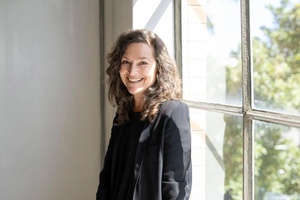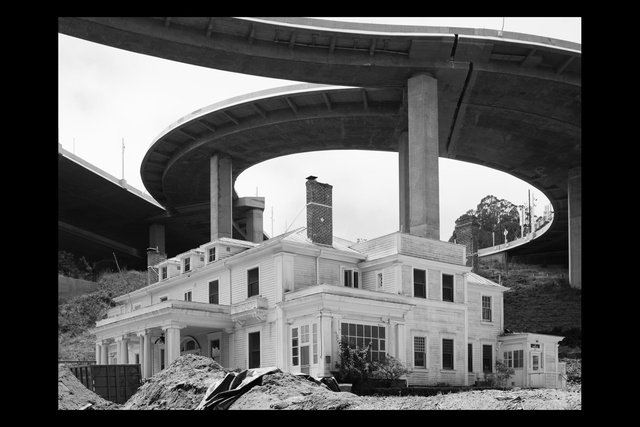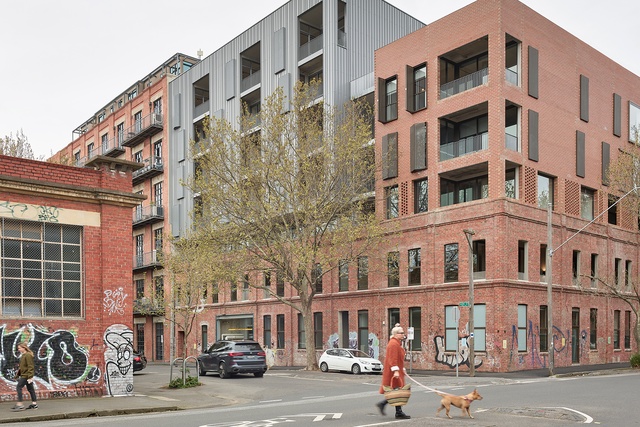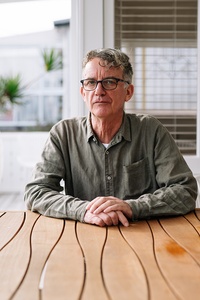The theory of everything
In this year’s Futuna lecture, Kerstin Thompson laid down a challenge to the profession. “My challenge is that more of us get our hands dirty and operate without full control of outcome and subsequent narrative.”
The 2023 Australian Institute of Architects Gold Medal recipient had been talking about the difficulty of designing in the public sector: in healthcare and public education projects on limited budgets within the constraints of templates, maintenance schedules and standards; and, in housing, where compliance with the various regulations and standards can be prescriptive in terms of outcomes. “It’s the challenge of innovating despite these that I think is the real hallmark of serious architecting”.

She had been talking about the necessity to design without dogma: instead, to “accommodate with intent” as the way through “the messy negotiated process that is architecting”. Thompson argued that a small innovation that is iterative, incremental and modest may be the better measure of a contribution than the one-off bespoke house or cultural project that may yield a purity of form or compelling expression. Hesitant for the latter to be an architect’s sole benchmark of excellence or disciplinary contribution, Thompson acknowledged architects who, alongside the more bespoke, also tackle the less-ideal, more-constrained challenge of the everyday, ordinary B-grade building type.
“I’d like to see more of our finest, most revered architects tackle these kinds of ordinary briefs such as social housing as a foundation for a more equitable society and for the placemaking opportunities that housing presents as the backbone to our cities.” Rousing stuff. Thompson goes a step further: “I feel strongly that this is a professional duty and ethic of practice”. She compares it to ‘the cab-rank rule’ for lawyers — an obligation to defend the next in line.
An ethical obligation to do social housing. It’s a big call. Then again, housing is such an integral part of life that when it’s unaffordable or in short supply, it likely colours everything. That’s according to Annie Lowrey in a piece in The Atlantic: ‘Everything Is About the Housing Market’.

Lowrey writes: “Housing costs are perverting just about every facet of American life, everywhere. What we eat, when we eat it, what music we listen to, what sports we play, how many friends we have, how often we see our extended families, where we go on vacation, how many children we bear, what kind of companies we found: All of it has gotten warped by the high cost of housing.”
Lowrey is not alone. In 2021, a trio of analysts wrote a piece for Works in Progress called ‘The Housing Theory of Everything’, which argued that almost any problem of policy or society today can be traced back to problems with accessing affordable housing. They write: “Most people’s most valuable asset is, by far, their own home. And housing is so important for the overall economy because it determines the location and supply of the most important ‘resource’ of all: people.” To Lowrey’s list of things housing shortages can be tied to, you can also add obesity (at least in America), climate change and, possibly, the spread of COVID-19.

Dezeen’s ‘Social Housing Revival’ series in March takes a similar line: “The consequences of this global crisis are profound”. It cites physical and mental health problems, bad educational outcomes, civic discontent and inhibited economic growth as also linked to poor-quality, unaffordable housing. Views on the root cause vary: “Some point to population growth and urbanisation driving demand, others to a lack of new development due to planning laws perceived as overly restrictive”. There is the financialisaton of housing — “the phenomenon whereby homes have increasingly been treated primarily as investment assets, including by some of the world’s largest corporations”. Add it all up and you arrive at something close to US$300 trillion being the total value of global residential real estate — around three times more than global GDP.

Proposed solutions vary but a recurring theme is addressing the supply problem through social housing. The exemplar in this approach is Vienna (see Christopher Kelly’s excellent piece, ‘Oh Vienna’), which has bucked the trend to the point where, according to a recent Deloitte study, the city’s renters, on average, pay roughly a third of what their counterparts do in London, Paris or Dublin.
That’s down to some 220,000 of the city’s rented apartments, many built a century ago in the 1920s and then again after the Second World War, being owned by the city. The Guardian’s ‘The social housing secret: how Vienna became the world’s most liveable city’ notes that a quarter of the people who live in Vienna are social tenants. If you also include the approximately 200,000 cooperative dwellings built with municipal subsidies, it’s more than half the population. The key to the city’s success is that Vienna-owned housing stock remains vast, and the city continues to build new housing to stay ahead of demand.
In Vienna, from the Red Vienna period (1918–1934) onwards, architects have happily innovated in social housing to the benefit of the city. In such an environment, Thompson’s proposed ethical obligation for architects to work in social housing as a foundation for a more equitable society doesn’t seem that challenging at all.
Response from Chris Bruin, in Letter to Editor, 23 May 2024:
Referring to Chris Barton’s editorial about the dilemma of housing and the architect’s role in it, my experience of the industry in New Zealand and Australia is many architects, designers and practices celebrate the large ‘bespoke’ individual house. They openly market themselves as ‘boutique’ and/or specializing in ‘high-end residential’ and they like to consider they work for a successful, elite clientele and are sometimes disparaging and critical of economical, standard housing. Unfortunately, and as Chris Barton pointed out, this approach and attitude developed due to housing being treated as an investment and as a continual replacement process of upsizing and elaboration. The home becomes a sign of a person’s status, character and level of success in life and, as the editorial goes on to explain, the house becomes the determinant of so much of a person’s life.
What I find ironic is when the ‘dream home’ is finally acquired its demand, use, convenience and probably desire for such is at its lowest. The requirement for such a house is certainly reduced.
A relative of mine visiting New Zealand from Northern Europe remarked upon the many large, obvious houses on the hill in Mount Pleasant, Christchurch as appearing a bit “anti-social”. I can’t say I have heard a description like this, for this type of housing, from many people.










